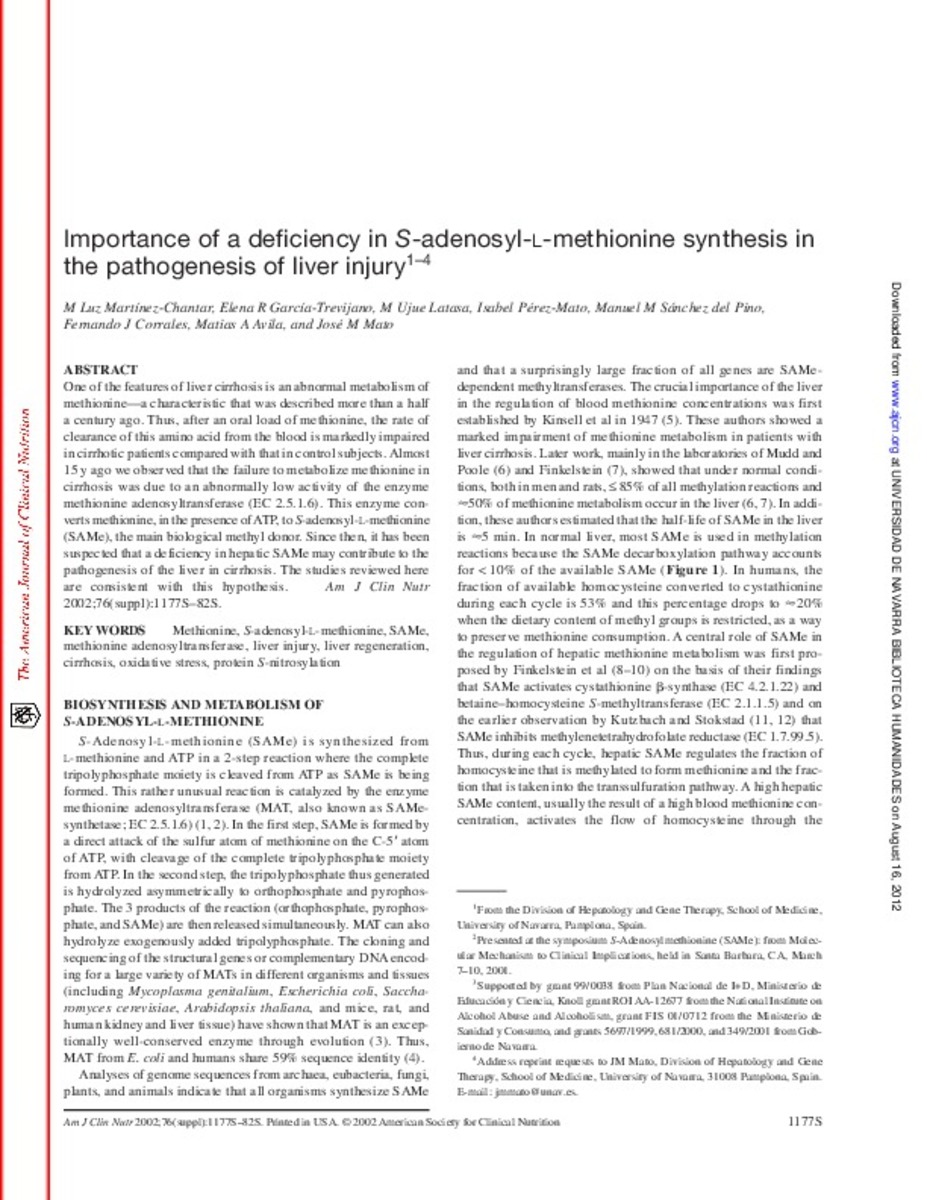Importance of a deficiency in S-adenosyl-L-methionine synthesis in the pathogenesis of liver injury
Keywords:
Methionine
S-adenosyl-l-methionine
SAMe
Methionine adenosyltransferase
Liver injury
Liver regeneration
Cirrhosis
Oxidative stress
Protein S-nitrosylation
Publisher:
American Society for Nutrition
Citation:
Martinez-Chantar ML, Garcia-Trevijano ER, Latasa MU, Perez-Mato I, Sanchez del Pino MM, Corrales FJ, et al. Importance of a deficiency in S-adenosyl-L-methionine synthesis in the pathogenesis of liver injury. Am J Clin Nutr 2002 Nov;76(5):1177S-82S.
Statistics and impact
0 citas en

0 citas en

Items in Dadun are protected by copyright, with all rights reserved, unless otherwise indicated.







